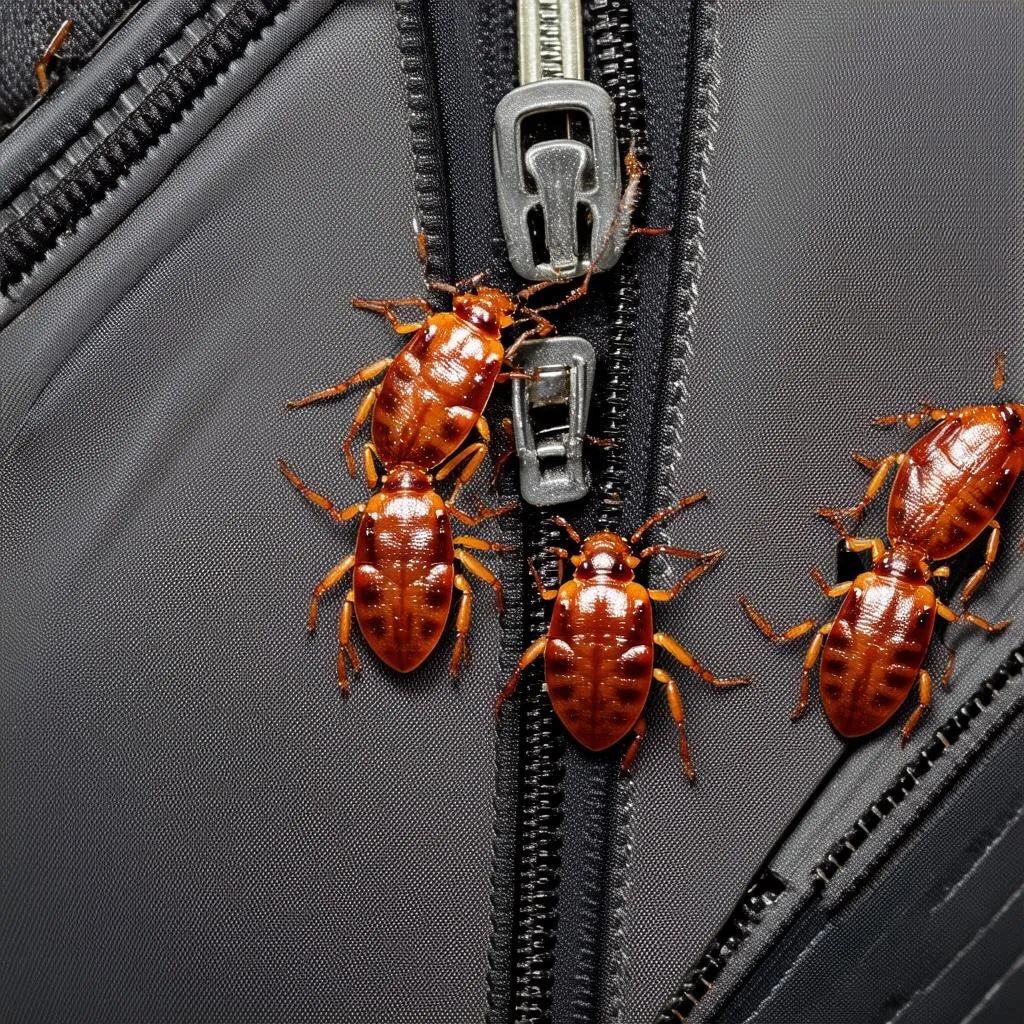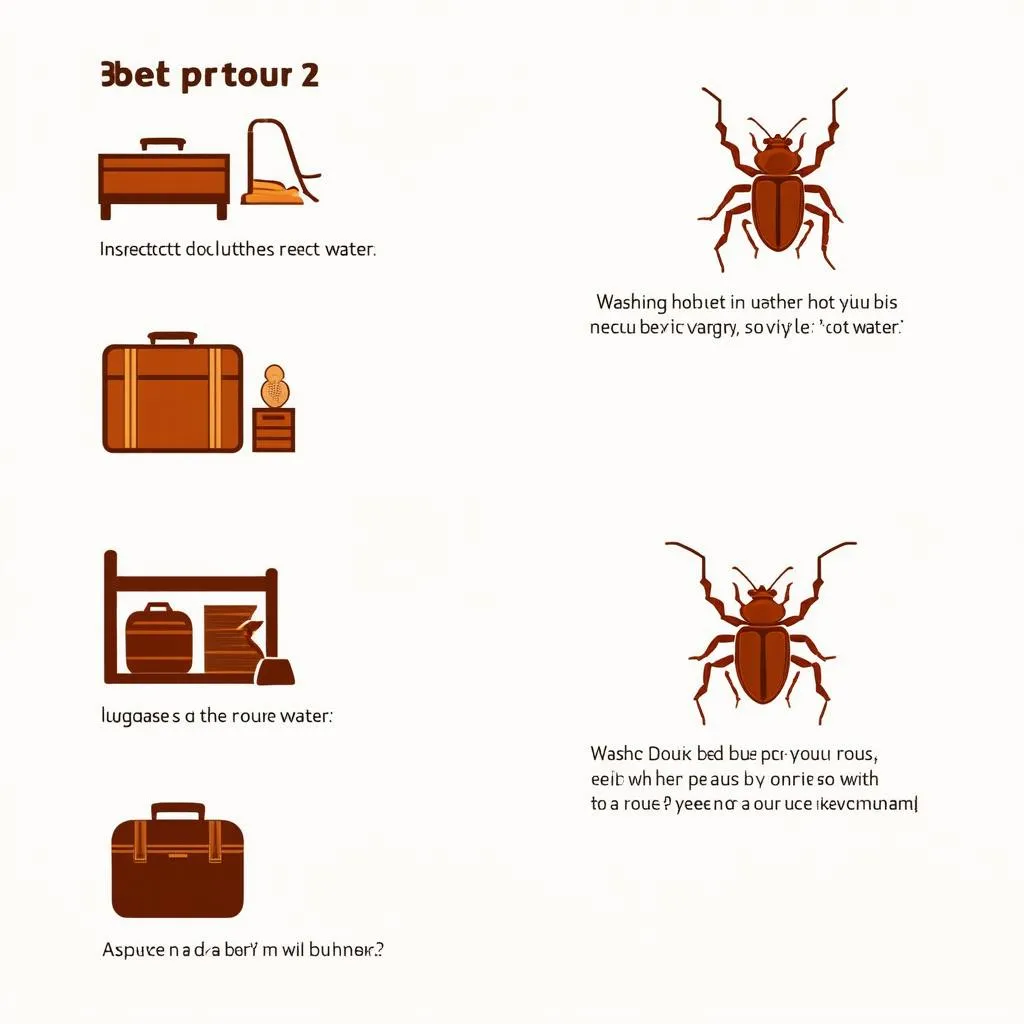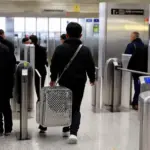Picture this: you’ve just returned from a relaxing vacation, only to find itchy bites all over your body. Upon closer inspection, you realize the horrifying truth – bed bugs have invaded your home. But how did these tiny creatures find their way from a hotel room thousands of miles away to your cozy abode? And even more concerning, How Do Bed Bugs Travel From Room To Room within your own home?
Unpacking the Mystery of Bed Bug Transportation
Bed bugs are expert hitchhikers. They can’t fly or jump, but they’re masters at clinging onto belongings and catching free rides. Here’s how these sneaky critters make their way from place to place:
Luggage: Your Unwitting Accomplice
Imagine yourself strolling through the vibrant streets of Bangkok, your suitcase trailing behind you. Unbeknownst to you, a few bed bugs from your hotel room have already embarked on their own adventure by nesting in the seams of your luggage. These resilient creatures can survive for months without a meal, patiently awaiting their next opportunity to feed.
Furniture: More Than Meets the Eye
That antique armchair you found at a flea market in Paris might hold more than just charm and history. Used furniture, especially mattresses, sofas, and bed frames, can harbor bed bugs and their eggs. Before introducing any pre-loved items into your home, it’s crucial to inspect them thoroughly for signs of infestation.
Clothing: A Fashion Statement You Don’t Want
Remember that time you left your backpack leaning against the wall of a bustling hostel in Rome? Bed bugs might have seized the opportunity to crawl inside and hitch a ride on your clothes. Always store your belongings in sealed bags when traveling, and wash them in hot water upon returning home.
Walls and Pipes: Secret Passageways
Even if you’re incredibly careful, bed bugs can still find their way from room to room through small cracks and crevices in walls, floors, and ceilings. They can also travel through shared ventilation systems and plumbing, making apartment buildings particularly susceptible to infestations.
 Luggage Infested with Bed Bugs
Luggage Infested with Bed Bugs
Prevention: Your Best Defense
While the thought of bed bugs traveling through your home might seem daunting, there are several measures you can take to prevent and control an infestation:
- Inspect luggage and clothing: Before entering your home, carefully check all luggage and belongings for bed bugs.
- Wash clothes in hot water: Launder all clothes and linens in hot water and dry them on high heat.
- Vacuum regularly: Thoroughly vacuum carpets, rugs, and furniture, paying close attention to crevices and seams.
- Seal cracks and crevices: Use caulk to seal any gaps or cracks in walls, floors, and around pipes.
- Be cautious with used furniture: Inspect used furniture carefully before bringing it into your home.
- Seek professional help: If you suspect an infestation, contact a qualified pest control professional immediately.
 Tips for Preventing Bed Bugs
Tips for Preventing Bed Bugs
FAQs: Addressing Your Concerns
Q: Can bed bugs travel on people?
While bed bugs prefer to hide in dark, undisturbed places, they can travel short distances on clothing or in bags.
Q: How fast can bed bugs spread from room to room?
Bed bugs can travel surprisingly fast, especially if they have ample hiding places and a readily available food source.
Q: Can I prevent bed bugs by using a mattress protector?
Mattress protectors can help deter bed bugs, but they won’t completely prevent an infestation.
Traveling with Peace of Mind
Dr. Emily Carter, a renowned entomologist and author of “Traveling Bug-Free,” emphasizes the importance of proactive measures in preventing bed bug infestations. “By staying vigilant and implementing simple precautions, travelers can significantly reduce their risk of encountering these unwelcome travel companions,” says Dr. Carter.
Whether you’re planning a luxurious escape to the Maldives or a backpacking adventure through the Amazon rainforest, remember that a little awareness and preparation can go a long way in ensuring a comfortable and pest-free trip.
For more travel tips and advice on staying healthy and safe on the road, visit TRAVELCAR.edu.vn.

